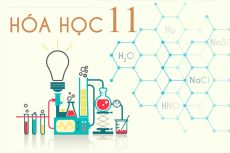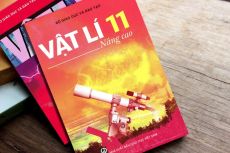Choose the best answer:
To save electricity, we are cutting down __________ our central heating.
Suy nghĩ và trả lời câu hỏi trước khi xem đáp án
Lời giải:
Báo saiGiải thích:
cụm từ cut down on: giảm thiểu cái gì
Dịch: Để tiết kiệm điện, chúng tôi giảm hệ thống sưởi trung tâm.
Câu hỏi liên quan
-
Read the following passage and choose the best answer (A, B, C, D):
The Internet has truly transformed how students do their homework. (1)______ homework today still means spending time in the library, it’s for a different reason. Rather than using books for research, students today are (2)______ to the Internet to download enormous amounts of data available online. In the past, students were limited to their school’s (3)______ of books. In many cases, they got to the school library and found out that someone had already taken the books they needed. Nowadays, such inconvenience can be avoided since the Internet never runs out of information. Students, however, do have to (4)______ sure that the information they find online is true. Teachers have also benefited from the homework which is done on the Internet. They do not need to carry students’ papers around with them any more. This is because online (5)______ allow students to electronically upload their homework for their teachers to read and mark. Of course, this also means that students can no longer use the excuse that the dog ate their homework! -
Read the following passage and mark the letter A, B, C, or D on your answer sheet to indicate the correct answer to each of the following questions:
It’s often said that we team things at the wrong time. University students frequently do the minimum of work because they’re crazy about a good social life instead. Children often scream before their piano practice 5 because it’s so boring. They have to be given gold stars and medals to be persuaded to swim, or have to be bribed to take exams. But the story is different when you’re older.
Over the years, I’ve done my share of adult learning. At 30, I went to a college and did courses in History and English. It was an amazing experience. For starters, I was paying, so there was no reason to be late - I was the one frowning and drumming my fingers if the tutor was late, not the other way round. Indeed, if I could persuade him to linger for an extra five minutes, it was a bonus, not a nuisance. I wasn’t frightened to ask questions, and homework was a pleasure not a pain. When I passed an exam, I had a big meal, not for my parents or my teachers. The satisfaction I got was entirely personal.
Some people fear going back to school because they worry that their brains have got rusty. But the joy is that, although some parts have rusted up, your brain has learnt all kinds of other things since you were young. It has learnt to think independently and flexibly and is much better at relating one thing to another. What you lose in the rust department, you gain in the maturity department.
In some ways, age is a positive plus. For instance, when you’re older, you get less frustrated. Experience has told you that, if you’re calm and simply do something carefully again and again, eventually you’ll get the hang of it. The confidence you have in other areas - from being able to drive a car, perhaps - means that if you can’t, say, build a chair instantly, you don’t, like a child, want to destroy your first pathetic attempts. Maturity tells you that you will, with application, eventually get there.
I hated piano lessons at school, but I was good at music. And coming back to it, with a teacher who could explain why certain exercises were useful and with musical concepts that, at the age of ten. I could never grasp, was magical. Initially, I did feel a bit strange, thumping out a piece that I’d played for my school exams, with just as little comprehension of what the composer intended as I’d had all those years before. But soon, complex emotions that I never knew poured out from my fingers, and suddenly I could understand why practice makes perfect.What is the writer’s main purpose in the passage?
-
Read the following passage and choose the best answer (A, B, C, D):
The leaves of most plants are green, because the leaves are full of chemicals which are that colour. The most important of these chemicals is called “chlorophyll” and it (1) __________ plants to make food so they can grow using water, air and light from the sun. this way that a plant makes food for itself is called “photosynthesis” and it is one of the most important processes taking place on the (2) __________ planet. (3) __________ photosynthesis there would be no plants or people on Earth. Dinosaurs would not have been able to breathe and the air and oceans would be very different from those we have today. So the green chemical chlorophyll is really important. All leaves contain chlorophyll, but sometimes not all of the leaf has chlorophyll in it. Some leaves have green and white or green and yellow stripes or (4)______. Only the green bits have chlorophyll and only those bits can make food by photosynthesis. If you’re really good at noticing things, you might have seen plants and trees with red or purple leaves – and the leaves are that colour all year round, not just in autumn. These leaves are still full of the important green chemical, chlorophyll, just like any other ordinary green leaf. (5) _________________, they also have lots of other chemicals that are red or purple – so much of them that they no longer look green. But deep down inside the leaves, the chlorophyll is still there and it’s still green. -
Mark the letter A, B, C, or D on your answer sheet to indicate the undelined part that needs correction in each of the following questions:
Music can bring us to tears or to our feet, drive us into battle or lull us to sleep. Music is indeed remarkable in its power over all humankind, and perhaps for that very reason, no human culture on earth has ever lived without it. From discoveries made in France and Slovenia, even Neanderthal man, as long as 53,000 years ago, had developed surprisingly sophisticated, sweet- sounding flutes carved from animal bones. It is perhaps then, no accident that music should strike such a chord with the limbic system – an ancient part of our brain, evolutionarily speaking, and one that we share with much of the animal kingdom. Some researchers even propose that music came into this world long before the human race ever did. For example, the fact that whale and human music have so much in common even though our evolutionary paths have not intersected for nearly 60 million years suggests that music may predate humans. They assert that rather than being the inventors of music, we are latecomers to the musical scene.
Humpback whale composers employ many of the same tricks that human songwriters do. In addition to using similar rhythms, humpbacks keep musical phrases to a few seconds, creating themes out of several phrases before singing the next one. Whale songs in general are no longer than symphony movements, perhaps because they have a similar attention span. Even though they can sing over a range of seven octaves, the whales typically sing in key, spreading adjacent notes no farther apart than a scale. They mix percussive and pure tones in pretty much the same ratios as human composers – and follow their ABA form, in which a theme is presented, elaborated on and then revisited in a slightly modified form. Perhaps most amazing, humpback whale songs include repeating refrains that rhyme. It has been suggested that whales might use rhymes for exactly the same reasons that we do: as devices to help them remember. Whale songs can also berather catchy. When a few humpbacks from the Indian Ocean strayed into the Pacific, some of the whales they met there quickly changed their tunes – singing the new whales’ songs within three short years. Some scientists are even tempted to speculate that a universal music awaits discovery.
The underlined word “refrains” in paragraph 2 is closest in meaning to .
-
Read the following passage and choose the best answer (A, B, C, D):
Superstitions used to be popular and beliefs in astrology, feng shui (geomancy), and spirits were widespread in Viet Nam. Following are some typical examples. Geomancers were consulted to make sure shops were properly situated. Fireworks displays were held to ward off evil spirits and haunted souls. Shopkeepers considered their first customer on auspicious days to be good luck, and they put heavy pressure on these customers to buy something. During a year of the dragon, which is considered an auspicious time to have a baby, the birth rate jumped 8 percent in the first half of the year. Despite official disapproval of such superstitious practices, some Vietnamese, regardless of their religion, level of education, or ideology, might have been influenced at one time or another by such practices as astrology, geomancy and sorcery. Diviners and other specialists in the occult remain popular demand because they are believed to be able to diagnose supernatural causes of illness, establish lucky dates for personal undertakings, or predict the future. Moreover, many seem to believe that individual destiny was guided by astrological phenomena. By consulting one’s horoscope, one could make the most of auspicious tines and avoid disaster. It is not unusual, for example, for a couple to consult an astrologer before marrying. He would determine if the betrothed were suitable matched and even fix the date of the ceremony
3. In a year of the dragon, from ____, the number of newborn baby increased by eight per cent. -
Read the following passage and choose the best answer (A, B, C, D)
It was not until 1920 when women finally got the right to vote. This was 50 years after the male ex-slaves of the United States were gaining the right to vote. Though women had already right to vote, the stereotypes made women be restricted in their actions. Would you believe that women who were doing the same job as men were getting paid only the 60% of what man wear to paint? In fact, they were getting paid differently for doing exactly the same work. In the 1930s there was not a huge choice of workplace for women. They could still work as secretaries, nurses, teachers and social workers. These kinds of professions were considered typically female professions and were paid much less than other professions. That kind of restrictions themed unbearable for some women. They rejected to go on with this rules anymore. They changed their hair color, style appearance and started to fight against the existing stereotypes. Those women were named in history as “flappers”. The first time in history they started wearing short skirts which were something shocking to the society. They also started driving cars, drinking alcohol, which raised a huge boom. Those kinds of things were considered “Non-feminine”. Actions of flappers were accepted as radical, though they had their influence on the society finally. The heavy restrictions started disappearing every year and today we have what we have. For a very long time, women were considered inferior to men. However, the role of a woman in society has significantly changed during recent decades. Today the importance of women in the society is beyond any suspicion. In today’s world, women with their ambitions, intelligence and strength have proved that the word “inferior” has nothing in common with their gender.
4. According to paragraph 2, which statement is NOT how the people of the past view the behaviours of “flappers”? -
Read the following passage and choose the best answer (A, B, C, D):
Generation gap refers to a vast difference in cultural norms between a younger generation and their elders. It’s a distressing thing for the phenomenon (1) ____ occurs around the world. The (2) ____ of communication, different views on certain problems and different attitudes towards life may cause the generation gap or even widen it. First, one of the major factors for this misunderstanding between two generations is that parents and children lack communication. Young people (3) ____ reveal their feelings to their parents, and often complain that their parents are out of (4) ____ with modern days, that they are dominant, that they do not trust their children to deal with crises, and that they talk too much about certain problems. So when young people meet some problems, they would rather (5) ____ to their classmates or their friends for help. The lack of communication widens the generation gap Another factor is that parents and their children see almost everything from different (6) ____. Take choosing career as an example. Parents generally believe it is their responsibility to plan the career for their children. Some hope their children will (7) ____ professions that will bring them greatest prestige and economic benefits. Some hope children will have a stable job with a regular income. But the youth may think they should be free to (8) ____ their own decisions as to their future career. Young people explain that true success is not a matter of money or position, instead, it is a matter of self-fulfillment. Finally, with the change of the world over decades, the attitude of the young has altered too. There are differences in (9) ____ matters as musical tastes, fashions, drug use, sex and politics between the young people and their elders. Nowadays long hair on young males is viewed as fashion by the young, but it is frequently considered a shocking act of rebellion against (10) ____ norms by parents -
Read the following passage and mark the letter A, B, C, or D on your answer sheet to indicate the correct answer to each of the questions.
Right now, the biggest source of energy in the world is fossil fuel. Fossil fuels are oil, gas, and coal. More than 80 percent of the world's energy comes from fossil fuel. There are many problems with fossil fuel. One problem is that when fossil fuel is burned, it pollutes the air. Also, when we take fossil fuel from the Earth, we often cause a lot of damage. Another problem is that we are running out of it. That is why we need new sources of energy. A big source of energy for many countries is nuclear power. Thirty-one countries use nuclear power. Many ships also use it.
Nuclear power has some advantages. First of all, we can't run out of nuclear power. Nuclear power does not make the air dirty. Also, if a country has nuclear power, it doesn't need to buy as much as oil from other countries.
However, there are also a lot of problems that come with nuclear power. For example, nuclear accidents are very serious. In 1986, there was a nuclear accident in Ukraine. In the next 20 years, about 4,000 people got sick and died. In 2011, there was another very serious nuclear accident in Japan. Japan is still trying to clean up the nuclear waste from the accident.
Many people don't want nuclear power in their countries. They say that it is not safe. A lot of people want their countries to use safer and cleaner ways to get electricity. There have been protests against nuclear energy in the United States, Russia, France, Taiwan, Japan, India, and many other countries.
Although many people hate nuclear energy, more and more countries are using it. One reason for this is that the world is using more and more energy. We just don't have enough fossil fuel. However, if we use nuclear power, then we may have more serious problems in the future.Which of the following statements would the author of the passage support most?
-
Read the following passage and choose the best answer (A, B, C, D):
My children can’t live without media. At age 14, 15 and 18, my daughters Sussy and Anni and my son Bill don’t use media. They inhabit media. And they do so exactly as fish inhabit a pond. Gracefully, and without consciousness and curiosity as to how they got there. They don’t remember a time before email or instant messaging or Google. When my children laugh, they don’t say “Ha, ha”. They say “LOL”. These are children who shrug indifferently when they lose their iPods, with all 5000 tunes plus video clips, feature films, and TV shows (like who watches TV on a television anymore?). “There is plenty more where that came from”, their attitude says. And they seem right. The digital content that powers their world can never truly be destroyed. As a social scientist, journalist, and mother, I’ve always been an enthusiastic user of information technology. But I’d noticed that the more we seemed to communicate as individuals, the less we seemed to function together as a family. And on a broader scale, that the more facts we have at our fingertips, the less we seem to know. That the “convenience” of messaging media (email, SMS, IM) consumes ever larger amounts of our time. That as a culture we are practically swimming in entertainment, yet remain more depressed than any people who have ever lived. Our family’s self-imposed exile from the information age changed our lives infinitely for the better. I watched as my children became more focused. I watched as their attention spans increased, allowing them to read for hours at a time; to hold longer and more complex conversations with adults and among themselves. They probably did no more homework during The Experiment than they had done before, but they all completed it far more efficiently and far more quickly The Experiment also forced us to notice food more. Before, eating had been a side dish. Now it was the main course, or at least one of them. Our approach to cooking changed, too, especially for the girls. They’d started out as reasonably competent cooks, but by the end of The Experiment they were capable of turning out entire meals with ease The Experiment also confirmed my strong suspicion that media has been robbing Sussy of sleep for years. Unplugged, the changes to her sleep patterns were dramatic. The evidence strongly suggests she is no isolated case. One study found that children who spend more time online also drink more caffeinated beverages, with a resulting effect on their prospects of sleeping well
7. The highlighted word "that" in the passage refers to -
Read the following passage and choose the best answer (A, B, C, D):
The world is losing languages at an alarming rate. Michael Krauss suggested that of the approximately 6,000 human languages alive today, only 350 to 500 are safe from extinction. Some linguists estimate that a language dies every two weeks or so. At the current rate, by 2100, about 2,500 native languages could disappear. Languages become extinct for many reasons. Through imperialism, colonizers impose their languages on colonies. Some politicians believe multilingualism will fragment national interests. Thus they prohibit education in all but the national language. Another reason for language death is the spread of more powerful languages. In the world today, several languages, including English, are so dominant in commerce, science, and education, that languages with fewer speakers have trouble competing. Although in the past, governments have been one of the primary causes of language death, many have now become champions of preserving endangered languages and have had some significant successes. Two outstanding examples are the revival of Hebrew and Irish. Hebrew was considered a dead language, like Latin, but is now the national language of Israel. Irish was not dead, but severely threatened by English when the government of Ireland began its rescue immediately after the establishment of the Irish Free State in 1922. All students in public schools must now take some classes in Irish and there are Irish programs in major media, such as television and radio. According to the Irish government, approximately 37% of the population of Ireland now speaks Irish. One of the largest programs to revive languages, Documenting Endangered Languages (DEL), is being conducted by three U.S. government agencies: the National Science Foundation, the National Endowment for the Humanities, and the National Museum of Natural History. Researchers funded by these agencies are recording interviews with the mostly elderly people who still speak the languages. Analyses of these interviews will help linguists publish dictionaries and grammars of the languages. Eventually, linguists hope to establish language-training programs where younger people can learn the languages, carrying them on into the future. The linguists participating in DEL defend spending millions of dollars to preserve dying languages. They point out that when a language dies, humanity loses all of the knowledge of the world that that culture held. Traditional healers in rural areas have given scientists important leads in finding new medicines; aspirin is an example of these. But one of the most common reasons given by these researchers is that studying languages gives us insight into the radically different way humans organize their world. David Lightfoot, an official at the National Science foundation, gives the example of Guguyimadjir, and Australian aboriginal language, in which there are no words for “right” or left,” only for “north,” “south,” “east,” and “west.” Many researchers are optimistic that the efforts to save dying languages will succeed, at least in part. Bruce L. Cole, Chairman of the National Endowment for the Humanities, said, “Not only is this a time of great potential loss, it is also a moment for enormous potential gain. In this modern age of computers and our growing technological capabilities, we can preserve, assemble, analyze, and understand unprecedented riches of linguistic and cultural information.”
7. David Lightfoot gives the example of Guguyimadjir in order to ______ -
Read the passage carefully and choose the correct answer.
Communication in general is process of sending and receiving messages that enables humans to share knowledge, attitudes, and skills. Although we usually identify communication with speech, communication is composed of two dimensions - verbal and nonverbal. Nonverbal communication has been defined as communication without words. It includes apparent behaviors such as facial expressions, eyes, touching, tone of voice, as well as less obvious messages such as dress, posture and spatial distance between two or more people. Activity or inactivity, words or silence all have message value: they influence others and these others, in turn, respond to these communications and thus they are communicating. Commonly, nonverbal communication is learned shortly after birth and practiced and refined throughout a person's lifetime. Children first learn nonverbal expressions by watching and imitating, much as they learn verbal skills. Young children know far more than they can verbalize and are generally more adept at reading nonverbal cues than adults are because of their limited verbal skills and their recent reliance on the nonverbal to communicate. As children develop verbal skills, nonverbal channels of communication do not cease to exist although become entwined in the total communication process.
Human beings ________.
-
Choose the option A, B, C or D to answers the question about the passage:
"Most young couples have meals regularly in their parents’ home with little or no pay, and give their children to the care of old couple free of charge. Investigations have shown that parents of many young couples don’t mind providing meals and caring for their children. However, this practice should not become an accepted social custom. The old couples’ expense on food has already increased while young couples spend more on clothing and furnishing and less on food. If this trend continues, many young couples might take these privileges for granted and become more dependent. It is not the right for young people to make use of the old couples’ love, not only because our nation is well-known for its special respect paid to the elderly, but also because the young must become independent What young people should do is to become more considerate towards their old parents. After years of hard work, they are worthy of such consideration."
4. Which of the following is TRUE according to the passage?
-
Read the following passage and choose the best answer (A, B, C, D):
Thunderstorms, with their jagged bursts of lightning and roaring thunder, are actually one of nature’s primary mechanisms for transferring heat from the surface of the earth into the atmosphere. A thunderstorm starts when low-lying pockets of warm air from the surface of the earth begin to rise. The pockets of warm air float upward through the air above that is both cooler and heavier. The rising pockets cool as their pressure decreases, and their latent heat is released above the condensation line through the formation of cumulus clouds. What will happen with these clouds depends on the temperature of the atmosphere. In winter, the air temperature differential between higher and lower altitudes is not extremely great, and the temperature of the rising air mass drops more slowly. During these colder months, the atmosphere, therefore, tends to remain rather stable. In summer, however, when there is a high accumulation of heat near the earth’s surface, in direct contrast to the considerably colder air higher up, the temperature differential between higher and lower altitudes is much more pronounced. As warm air rises in this type of environment, the temperature drops much more rapidly than it does in winter; when the temperature drops more than 4 degrees Fahrenheit per thousand feet of altitude, cumulus clouds aggregate into a single massive cumulonimbus cloud, or thunderhead. In isolation, a single thunderstorm is an impressive but fairly benign way for Mother Earth to defuse trapped heat from her surface; thunderstorms, however, can appear in concert, and the resulting show, while extremely impressive, can also prove extraordinarily destructive. When there is a large-scale collision between cold air and warm air masses during the summer months, a squall line, or series of thunderheads, may develop. It is common for a squall line to begin when an advancing cold front meets up with and forces itself under a layer of warm and moist air, creating a line of thunderstorms that races forward at speeds of approximately forty miles per hour. A squall line, which can be hundreds of miles long and can contain fifty distinct thunderheads, is a magnificent force of nature with incredible potential for destruction. Within the squall line, often near its southern end, can be found supercells, long-lived rotating storms of exceptional strength that serve as the source of tornadoes.
8. This reading would most probably be assigned in which of the following courses? -
Read the following passage and choose the best answer (A, B, C, D):
Nature photographer Joel Sartore is passionate about endangered species. He uses his camera to make people aware of environmental problems. They tell the stories of animals that may disappear unless we work fast to save them. Sartore’s latest project is called Photo Ark. The goal of the project is to make a photographic record of the world’s biodiversity. As Sartore says, “For many of Earth’s creatures, time is running out.” When asked how he became interested in saving endangered species, Joel said “When I was a child, I read about Martha, the very last passenger pigeon. Martha died in 1914. I was shocked. In the past, there were 5 billion passenger pigeons – probably more than any other bird. But here was the last one, and there was no way to save it. How did we let this happen? I couldn’t understand it. I still feel the same way. I want to prevent this from ever happening again.” Photography is the best way to show problems to the world. It gets people to care about the problem. It’s not enough to just show pretty animals in a beautiful landscape. Now, we must show the threats to these animals as well. The good news is that there are many ways to publish stories and photographs on environmental issues. Self-publishing on the Web is one way to do this. Even nonprofessional photographers can help to make us aware of these problems
4. According to the passage, which of the following best describes Joel Sartore’s interest in saving endangered species? -
Read the following passage and choose the best answer (A, B, C, D):
Kissing under sprigs of mistletoe is a well-known holiday tradition, but this little plant’s history as a symbolic herb dates back thousands of years. Many ancient cultures prized mistletoe for its healing properties. The plant’s romantic overtones most likely started with the Celtic Druids of the 1st century A.D. Because mistletoe could blossom even during the frozen winter, the Druids came to view it as a sacred symbol of vivacity, and they administered it to humans and animals alike in the hope of restoring fertility. Another famous chapter in mistletoe folklore comes from Norse mythology. As the story goes, when the god Odin’s son Baldur was prophesied to die, his mother Frigg, the goddess of love, went to all the animals and plants of the natural world to secure an oath that they would not harm him. But Frigg neglected to consult with the unassuming mistletoe, so the scheming god Loki made an arrow from the plant and saw that it was used to kill the otherwise invincible Baldur. According to one sunnier version of the myth, the gods were able to resurrect Baldur from the dead. Delighted, Frigg then declared mistletoe a symbol of love and vowed to plant a kiss on all those who passed beneath it. Mistletoe’s associations with fertility and vitality continued through the Middle Ages, and by the 18th century it had become widely incorporated into Christmas celebrations. Just how it made the jump from sacred herb to holiday decoration remains up for debate, but the kissing tradition appears to have first caught on among servants in England before spreading to the middle classes. As part of the early custom, men were allowed to steal a kiss from any woman caught standing under the mistletoe, and refusing was viewed as bad luck.
4. The word “it” in paragraph 2 refers to _______ -
Read the following passage and choose the best answer (A, B, C, D):
Stage and film acting both involve performances in front of an audience. There are fundamental differences between the two. When you act for the stage, you are performing in front of a live audience. That means that your voice and your body movements must be clear even to those seated at the back row. Film acting, on the other hand, requires no voice projection. This is because you are performing in front of the camera. Although a film actor still needs to put the right expression to pull off a role realistically, overdoing movement or being overly expressive actually works against him in film acting because this can be construed as overacting. Controlled and small gestures are the requirements when acting for film. Another difference between stage acting and film acting is the material that is used. Theater involves doing well-known plays time and time again. As such, directors, producers and even avid theater-goers know the plays by heart. Some would even know every line and have developed expectations on how it should be delivered. When a line is not correctly said or the action delivered is not what is expected, an actor can be criticized severely. This is not an issue with film acting because the script is freshly-written. There are basically no expectations on how a role is supposed to be played. Putting the character to life becomes your responsibility and casting directors often choose talents based on their ability to give an authentic and believable performance. The fact that stage acting is done in real time also differentiates it from film acting. The scenes are done in sequence, often building up to a climax. This means that stage actors can’t afford to make mistakes. They have to memorize their lines well or risk forgetting in the middle of the performance. Stage actors must also exhibit quick thinking in case something unexpected happens on stage. Film acting is not done in front of a live audience. Although actors are encouraged to perform the scene perfectly on the first take because of budgetary considerations, a scene can always be redone in case the director is not satisfied with it. When an actor forgets his lines, there is always a script that can be referred back to without causing any damage to the outcome of the movie.
8. Which of the following can be inferred from the passage? -
Read the following passage and choose the best answer (A, B, C, D):
Rogue waves are extremely large waves that are more than double the average height of most waves. According to mathematical calculations and various personal accounts, rogue waves can reach remarkable heights. They appear unexpectedly in calm waters and can do major damage, even to large ships. Unlike tsunamis, which are practically undetectable in deep water, rogue waves only occur far out at sea. Stories about rogue waves have circulated amongst sailors for centuries, but it was not until recently that scientists confirmed they actually exist. What they still are not sure of, however, is what causes them. Some instances of rogue waves have been explained by the interactions of normal wave patterns with ocean currents. Scientists believe that it is possible for waves to reach the heights described when they come into contact with strong ocean currents. The wave heights increase significantly when a normal wave reaches a current head on. In other words, the wave is built up by the power of the current. This explanation was first proposed after scientists observed a high incidence of rogue waves in the ocean surrounding the southern tip of Africa. In fact, since 1990, at least twenty ships have encountered the waves, which reportedly reached up to 190 feet. The waves are thought to be caused by wave interactions with the strong Agulhas Current, which runs southbound along the east coast of the continent.
8. Which of the following is given definition in the passage? -
Read the following passage and choose the best answer (A, B, C, D):
According to the American Red Cross, there’s a 97% chance that someone you know will need a blood transfusion. Blood donors — especially donors with certain blood types — are always in demand. To donate blood, the American Red Cross requires that people be at least 17 years old and weigh more than 110 pounds. (In some states, the age is 16 with a parent’s permission.) Donors must be in good health and will be screened for certain medical conditions, such as anemia. Donors who meet these requirements can give blood every 56 days. Blood donation starts before you walk in the door of the blood bank. Eat a normal breakfast or lunch — this is not a good time to skip meals — but stay away from fatty foods like burgers or fries. And be sure to drink plenty of water, milk, or other liquids. Before donating, you’ll need to answer some questions about your medical history, and have your temperature, pulse, blood pressure, and blood count checked. The medical history includes questions that help blood bank staff decide if a person is healthy enough to donate blood. They’ll probably ask about any recent travel, infections, medicines, and health problems. Donated blood gets tested for viruses, including HIV (the virus that causes AIDS), hepatitis B, hepatitis C, syphilis, and West Nile virus. If any of these things are found, the blood is destroyed. Because blood can be infected with bacteria as well as viruses, certain blood components are tested for contamination with bacteria as well. Are there any risks? A person can’t get an infection or disease from giving blood. The needles and other equipment used are sterile and they’re used only on one person and then thrown away. The U.S. Food and Drug Administration (FDA) regulates U.S. blood banks. All blood centers must pass regular inspections in order to keep operating. Sometimes people who donate blood notice a few minor side effects like nausea, lightheadedness, dizziness, or fainting, but these symptoms usually go away quickly. The donor’s body usually replaces the liquid part of blood (plasma) within 72 hours after giving blood. It generally takes about 4–8 weeks to regenerate the red blood cells lost during a blood donation. An iron-fortified diet plus daily iron tablets can help rebuild a donor’s red blood supply. The Red Cross estimates that 15% of all blood donors in the United States are high school or college students — an impressive number when you consider you have to be 16 or 17 to donate blood. If you are eligible and want to donate blood, contact your local blood bank or the American Red Cross for more information on what’s involved. You could save someone’s life.
4. The word “that” in paragraph 3 refers to _____________ -
Read the following passage and choose the best answer (A, B, C, D):
The International Ecotourism Society (TIES), a non-profit organization committed to promoting sustainable tourism, states that ecotourism unites conservation and communities with sustainable travel. With that being said, they offer six core principles of ecotourism that vacationers should follow: minimize impact, build environmental and cultural awareness and respect, provide positive experiences for both visitors and hosts, provide direct financial benefits for conservation, provide financial benefits and empowerment for local people, and raise sensitivity to host countries’ political, environmental, and social climate. Ecotourism offers the opportunity to help protect and maintain our planet. Beginning with responsible travel, sustainable tourism promotes green practices such as recycling and using organic products. There are also many environmental programs and initiatives made available so that people can get involved with sustainability. For example, in Kenya, tourists can get involved with the Basecamp Foundation, which has a monitoring program for big cats and elephants. These kinds of experiences try to demonstrate the positive impact of tourism and teach tourists about the significance of maintaining the environment. However, the simple act of being a tourist in a fragile, natural area helps a great deal, as the money spent there assists in raising funds to protect those areas for generations. Sustainable tourism supports local communities by allowing their economy to grow. Tourism alone employs a large number of local staff. This in turn empowers communities to fight against poverty and encourages the support of local events, festivals, and organizations. As a result the community and its local businesses thrive. Not only is ecotourism an environmentally fun experience, but it’s also educational. By embarking on an ecotourism vacation, people gain an awareness and understanding of the social and economic conditions of the place they visit. In addition, vacationers learn to appreciate the area’s environment through conservation and also to respect the culture of the local people. While tourists are normally unaware of a country’s poverty or ill conditions, ecotourism strives to expose tourists to the realities of these areas. Ecotourism is a new holiday experience that mixes together vacation fun with conservation and education. Sustainable tourism creates environmentally aware individuals and helps develop their appreciation of nature and local culture. Not only do vacationers go home with new knowledge, but also a worthwhile experience.
7. Which of the following statements is TRUE, according to the passage? -
Read the following passage and choose the best answer (A, B, C, D):
Orbis is an organization which helps blind people of everywhere. It has built an eye hospital inside an airplane and (1)___________ it all over the world with an international medical team. Samantha Graham, a fourteen-year-old schoolgirl from England, went with the plane to Mongolia. Samantha tells the story of the Eukhtuul, a young Mongolian girl. ‘Last year, when Eukhtuul was walking home from school, she was attacked by boys with sticks and her eyes were (2) _________ damaged. Dr. Duffey, an Orbis doctor, said that without an operation she would never see again. I thought about all the things I (3)________ that she couldn’t, things like reading schoolbooks, watching television, seeing friends, and I realized how lucky I am.’ ‘The Orbis team agreed to operate (4) ________ Eukhtuul and I was allowed to watch, together with some Mongolian medical students. I prayed the operation would be successful. The next day I waited nervously with Eukhtuul while Dr. Duffey removed her bandages. “In six months your sight will be back to (5)__________,” he said. Eukhtuul smiled, her mother cried, and I had to wipe away some tears, too!’ Now Eukhtuul wants to study hard to become a doctor. Her whole future has changed thanks to a simple operation. We should all think more about how much our sight means to us











